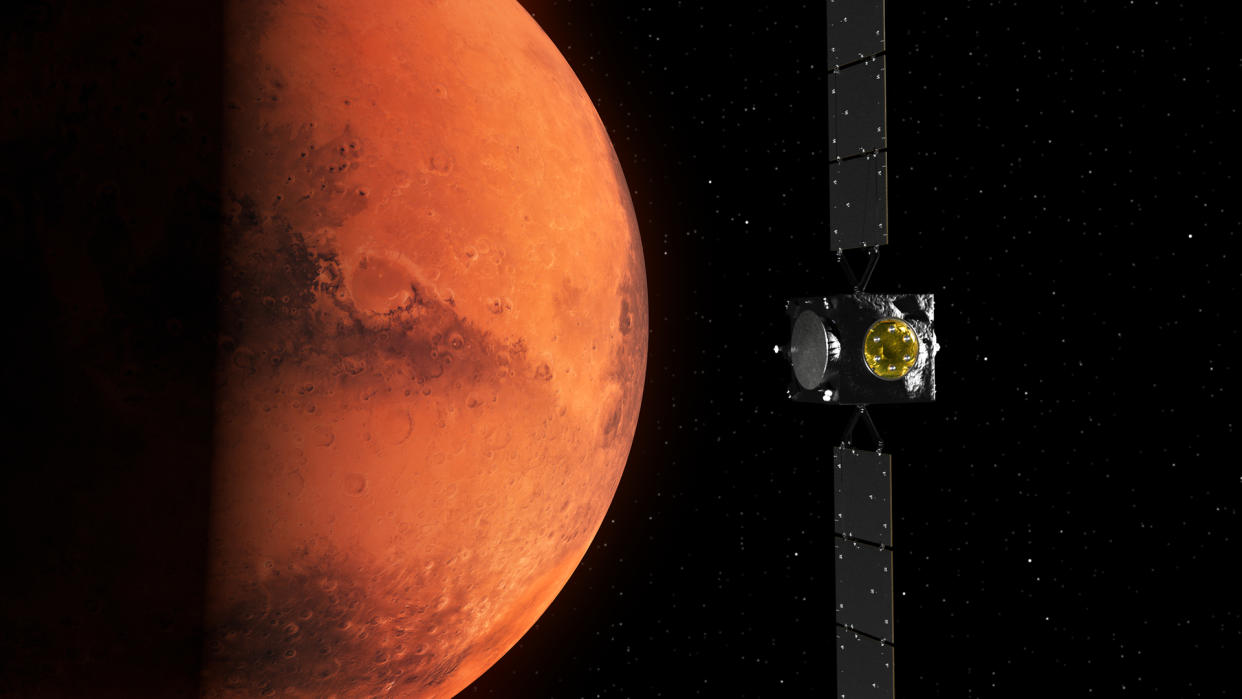This spacecraft is headed to NASA's asteroid-crash aftermath — but first, it'll stop by Mars

The journey into space is a long one, which gives many spacecraft time for a side quest or two during their missions. In the case of the European Space Agency's Hera mission, the side quest is a close encounter with Mars — more specifically, a good look at its moon: Deimos.
Scheduled to launch in October, Hera's main mission is to fly to the binary asteroid system called Didymos, surveying the surface of the smaller asteroid in the duo named Dimorphos. Dimorphos, as you might recall, was part of NASA's DART mission, a planetary defense test that saw a spacecraft intentionally crash into the asteroid. The goal was to see if the impact could alter Dimorphos' trajectory around its larger companion, Didymos, mimicking a possible scenario in which a spacecraft could alter the trajectory of an asteroid that threatens Earth someday. In short, it was a success. But first, during its two-year cruise to Didymos, Hera will test its science instruments during a Martian flyby.
In March of next year, Mars will be at just the right position on Hera's path to Didymos for a gravity assist. "This enabled us to design a trajectory that uses the gravity of Mars to push Hera towards its rendezvous with Didymos, resulting in great fuel savings for the mission," Flight Dynamics engineer Pablo Muñoz, part of the mission analysis team at ESA's European Space Operations Centre, said in a statement. "Part of the excess propellant can then be spent in advancing the arrival at the binary asteroid by a few months, thus maximizing the mission’s planetary defense and science return."
Related: Scientists hail DART success 6 months after historic asteroid crash
During this maneuver, Hera will come within 3,728 miles (about 6,000 kilometers) of Mars and 621 miles (about 1,000 km) of Deimos. Given this proximity, the spacecraft will use its science instruments — including its main camera, HyperScout-H camera and Thermal Infrared Imager — to study both bodies as it swings by. "It gives us another chance to calibrate our instruments and potentially to make some scientific discoveries," said Michael Kueppers, ESA's Hera project scientist.
Related Stories:
— NASA's DART mission has a sequel. How Europe's HERA will explore an asteroid impact aftermath
— Why Europe is sending a probe to DART-battered Dimorphos
— NASA's asteroid-impacting DART mission completely changed the shape of its target
The team plans to execute its Deimos research in partnership with other missions; contenders for collaboration include the Emirates Mars Mission as well as ESA's Mars Express and ExoMars Trace Gas Orbiter missions. "Deimos has not been observed before with Hera’s combination of science instruments, so hope to make some discoveries," said Patrick Michel, Director of Research at CNRS at Observatoire de la Côte d'Azur and Hera's principal investigator. The Deimos data will also be used to help plan JAXA's upcoming Martian Moons Exploration (MMX) mission, scheduled to launch in 2026.
After Hera speeds past Mars, it's onward to Didymos and its now-misshapen companion Dimorphos (thanks to the collision), where the spacecraft will gather information on the asteroid to better understand DART's impact — both literally and metaphorically.

